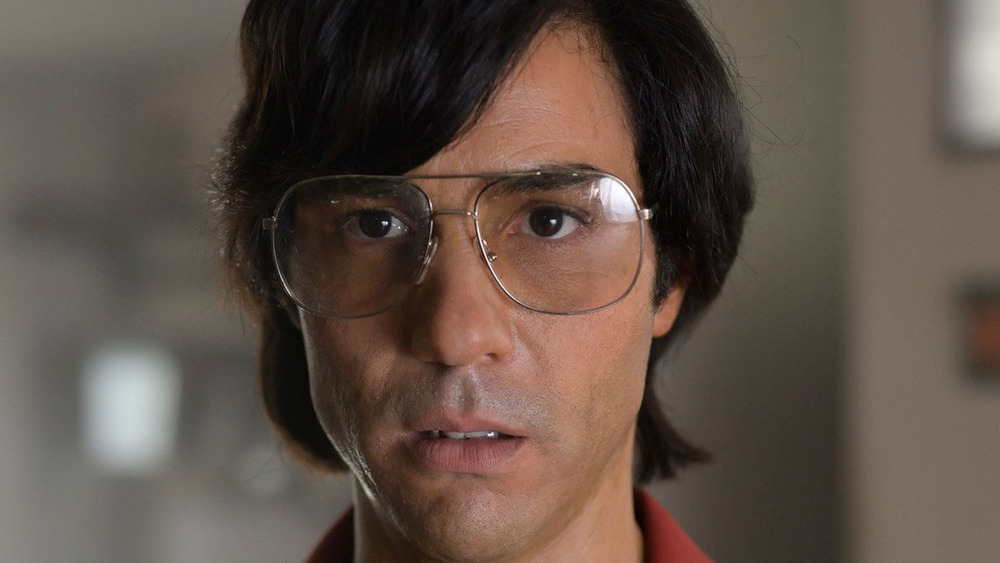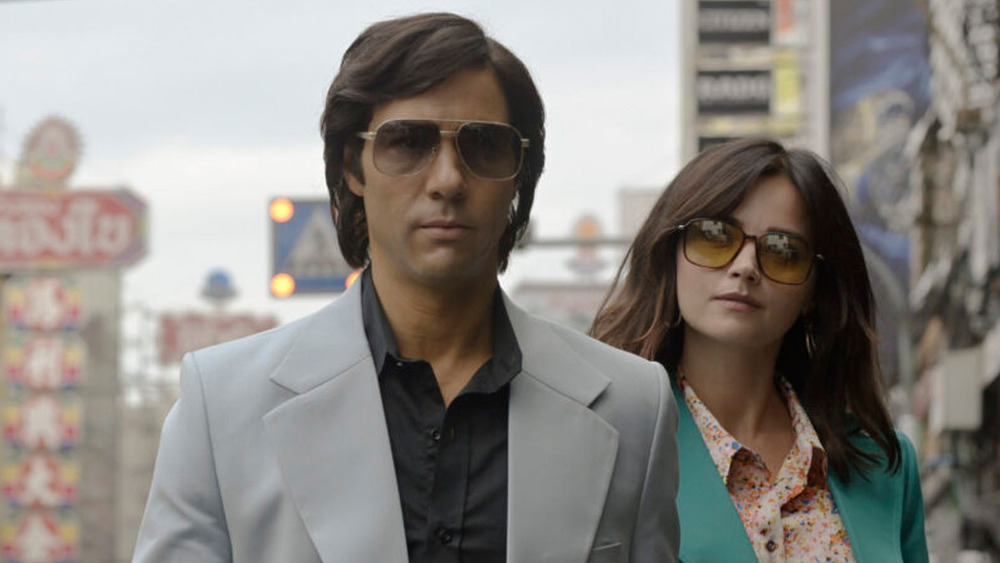How Accurate Is The Serpent?
It's never been a better time to be a true crime fan. Thanks to podcasts like Serial and Making a Murderer, streaming services and traditional cable channels have been cranking out new true crime documentaries and drama series on a weekly basis. This week's true crime binge is The Serpent, an eight-part miniseries that premiered on BBC One on New Year's Day 2021, and makes its U.S. debut on Netflix on April 2.
The series explores the real-life murders committed by serial killer Charles Sobhraj (Tahar Rahim) and his accomplice girlfriend, Marie-Andrée Leclerc (Jenna Coleman). Born in 1944 in Vietnam, Sobhraj was a career criminal who was first arrested for burglary in 1963. In 1975 and 1976, Sobhraj and Leclerc preyed on Western tourists traveling the Hippie Trail, a popular backpacking route in the 1970s that stretched across Southeast Asia, including Afghanistan, Pakistan, India, and Nepal. Sobhraj is known to have killed at least nine victims (via Cosmopolitan).
No TV show or movie based on a true story is ever going to be 100% accurate. Liberties have to be taken with the facts in service of the greater story. So how much of The Serpent is fact and how much is fiction? Some spoilers ahead.
The real Charles Sobhraj is just about as monstrous as the one from The Serpent
The Serpent mostly portrays Charles Sobhraj and his methods accurately. When asked to describe serial killers, the real Sobhraj once said, "Either they have too much feeling and cannot control themselves, or they have no feelings. It is one of the two" (via Toronto Sun). According to his own definition, Sobhraj fits into the latter category. Unlike many serial killers, Sobhraj didn't commit his crimes because he enjoyed killing, but rather to pay for his extravagant lifestyle.
The Serpent's main character is actually the Dutch diplomat Herman Knippenberg (Billy Howle). The real-life Knippenberg stumbled onto Sobhraj's crimes while looking into the disappearance of two Dutch tourists, Henk Bintanja and Cornelia Hemker. He eventually helped bring Sobhraj to justice. Now 76, Knippenberg praised the show's portrayal of him as spot-on (via Loose Women).
The Serpent also follows the broad outline of Sobhraj's life and crimes. The show begins in 1975 and follows Knippenberg's pursuit of Sobhraj until his capture a year later in India. Sobhraj spent about ten years in jail before he tried to escape, which resulted in another ten years added to his sentence. After his release in 1997, he traveled to Nepal in 2003 where he received a life sentence for another murder.
But there was one detail the show fudged. According to Georgina Nunez, who encountered the killer while traveling in the 1970s, Sobhraj didn't serve his victims drugged tea to knock them out; it was actually coffee (via Express U.K.). The natural bitterness masked the drugs' flavor.
So there's the answer. The Serpent takes a few small liberties, but it's pretty darn accurate — which is terrifying.

